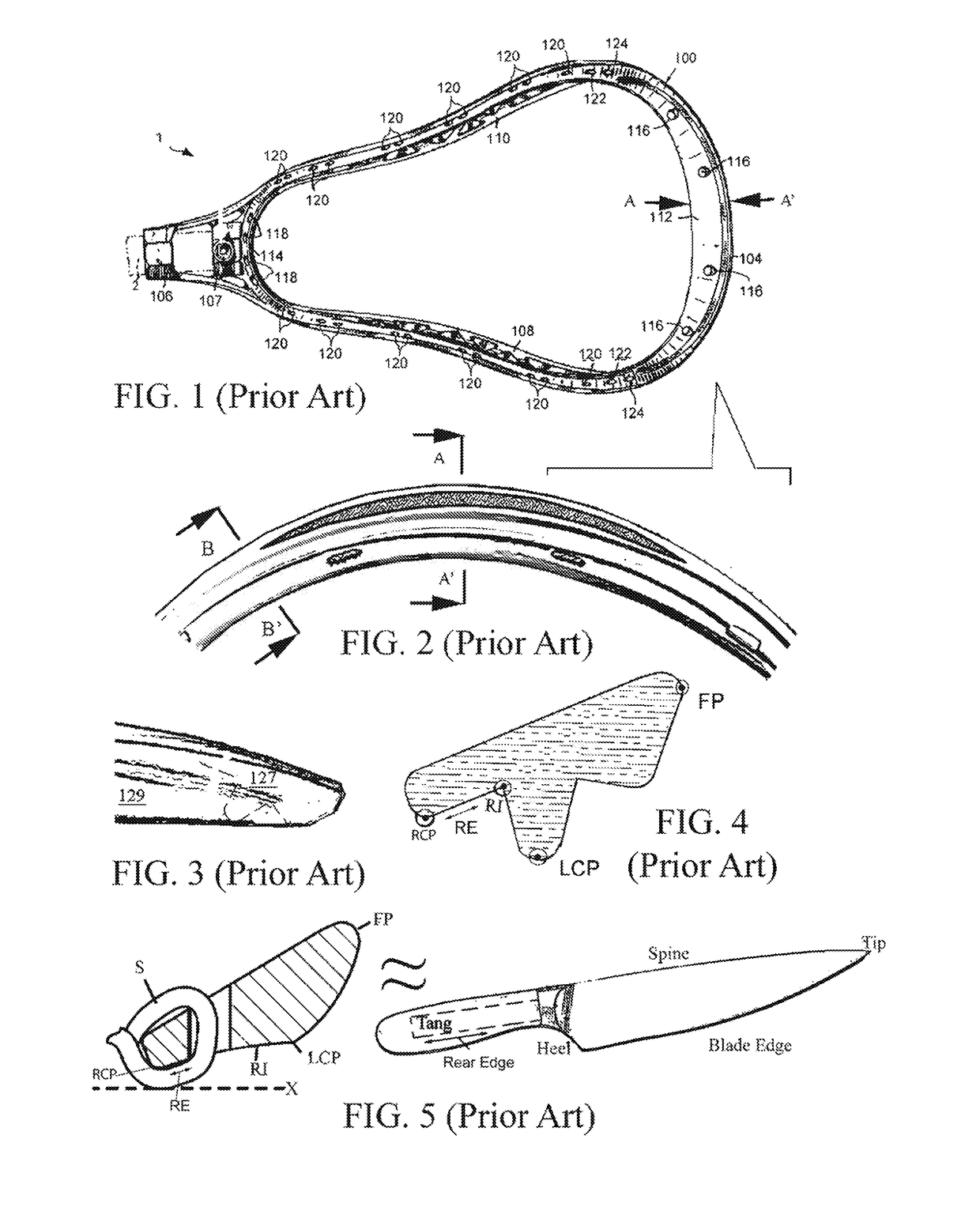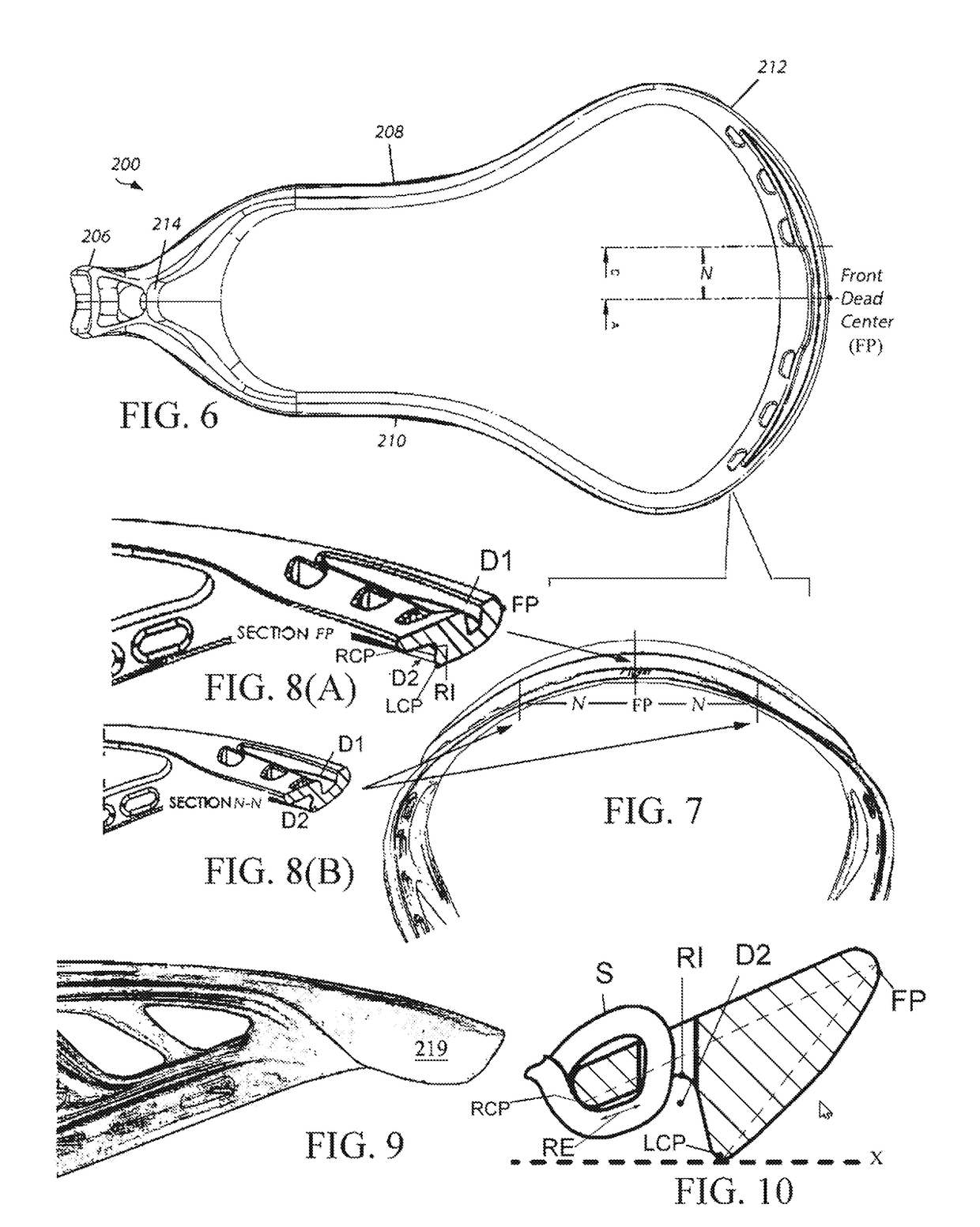Lacrosse head
a head and lacrosse technology, applied in the field of lacrosse, can solve the problems of reducing the scooping efficiency, wear and tear of the exposed pocket strings, and inefficient and somewhat obstructive design, and achieve the effects of constant cross-section, easy moldability, and smooth ground ball play
- Summary
- Abstract
- Description
- Claims
- Application Information
AI Technical Summary
Benefits of technology
Problems solved by technology
Method used
Image
Examples
Embodiment Construction
[0026]The present invention is a molded double-wall synthetic lacrosse head having an improved scoop geometry that facilitates scooping up a ball while it rests or rolls on the playing surface.
[0027]For purposes of this disclosure, the lacrosse head “front dead center” is herein defined as the foremost point (FP) on the lacrosse head that is furthest along the x-axis from the origin when the lacrosse head is horizontally-oriented along the x-axis of an xyz coordinate system. FIGS. 6-9 illustrate the lacrosse head with improved scoop geometry for ground play according to the invention, which improved scoop geometry is described with reference to a cross-section taken at front dead center along the x-y plane.
[0028]As seen in FIG. 6 the lacrosse head 200 generally comprises a V- or U-shaped frame engaged to a handle at a juncture 206. A stop member 214 is provided adjacent to the juncture 206 and a pair of sidewalls 208 and 210 extend from the stop member 214 and juncture 206 in a gene...
PUM
 Login to View More
Login to View More Abstract
Description
Claims
Application Information
 Login to View More
Login to View More - R&D
- Intellectual Property
- Life Sciences
- Materials
- Tech Scout
- Unparalleled Data Quality
- Higher Quality Content
- 60% Fewer Hallucinations
Browse by: Latest US Patents, China's latest patents, Technical Efficacy Thesaurus, Application Domain, Technology Topic, Popular Technical Reports.
© 2025 PatSnap. All rights reserved.Legal|Privacy policy|Modern Slavery Act Transparency Statement|Sitemap|About US| Contact US: help@patsnap.com



